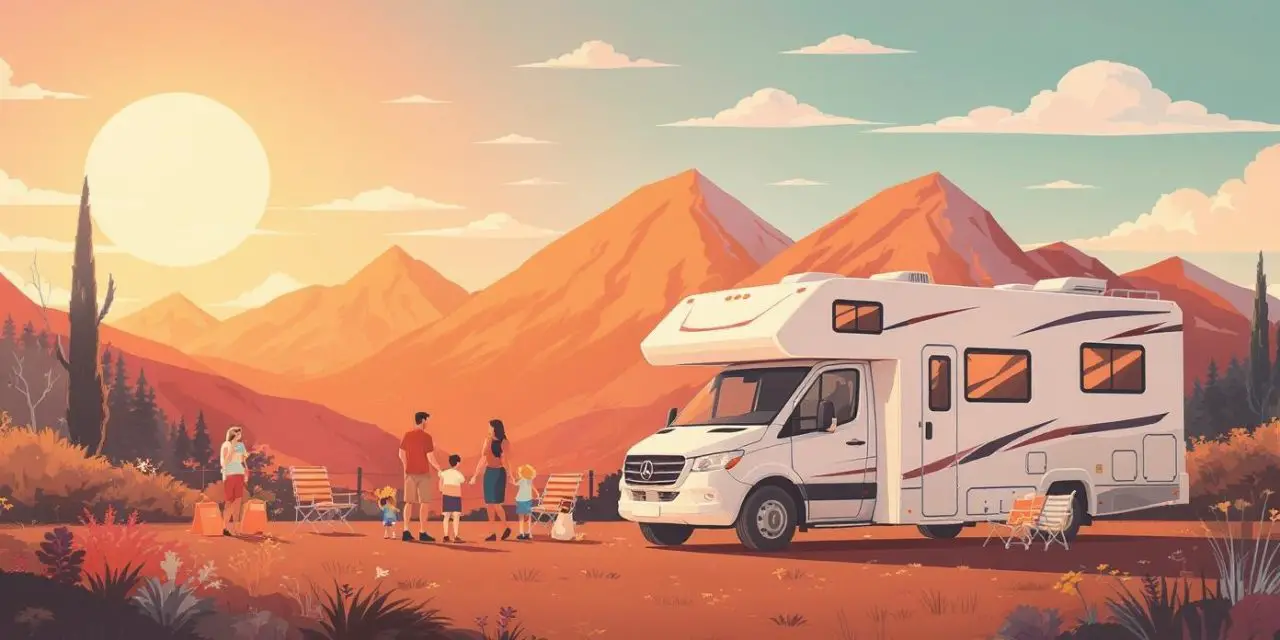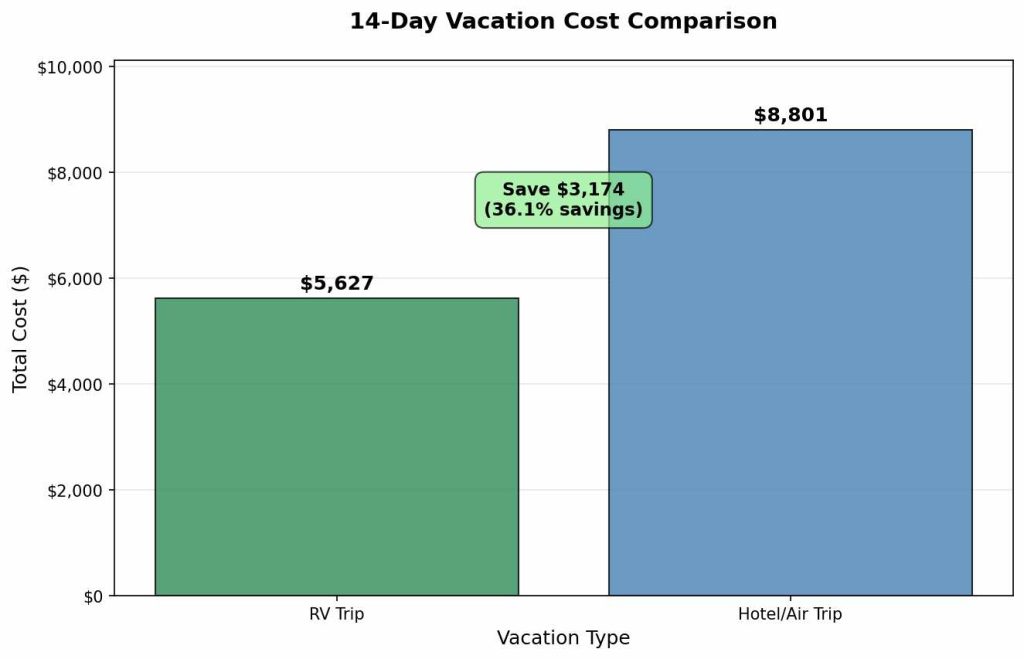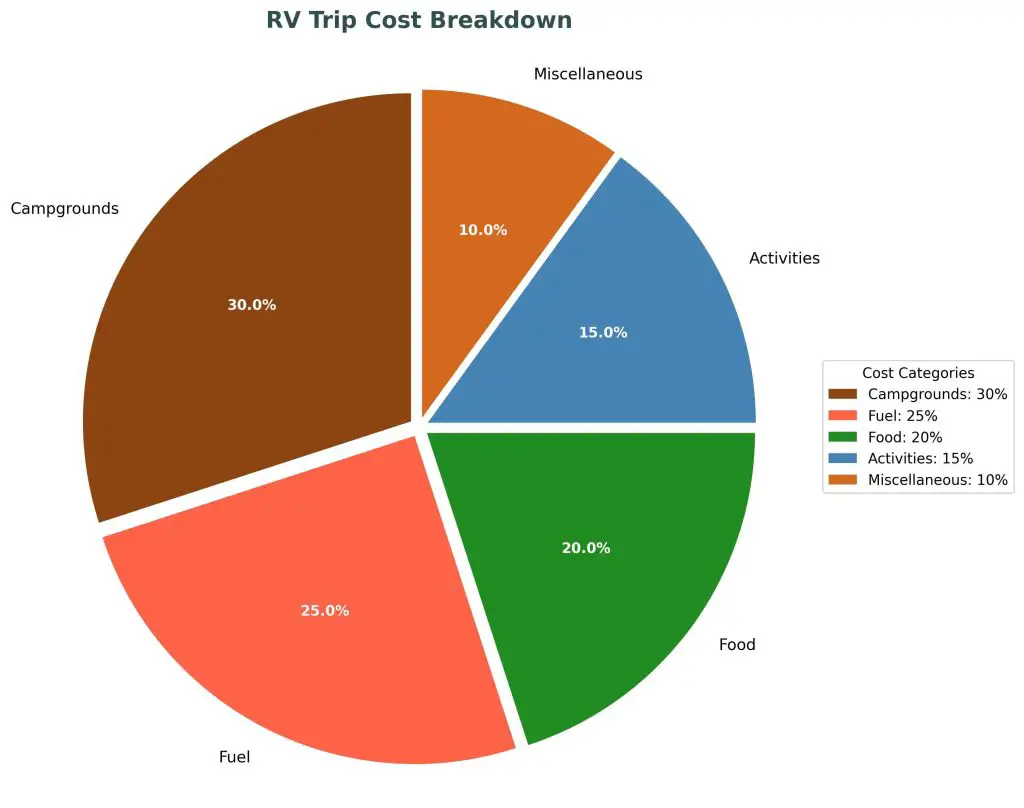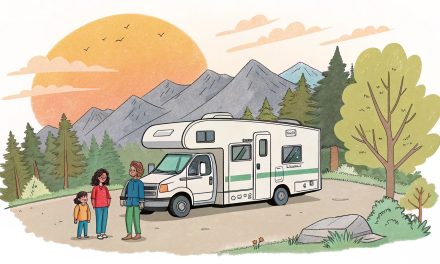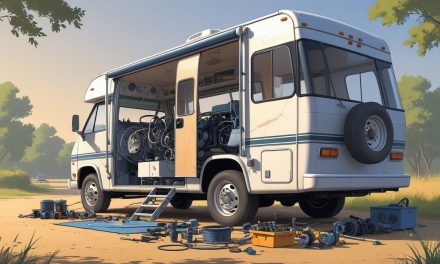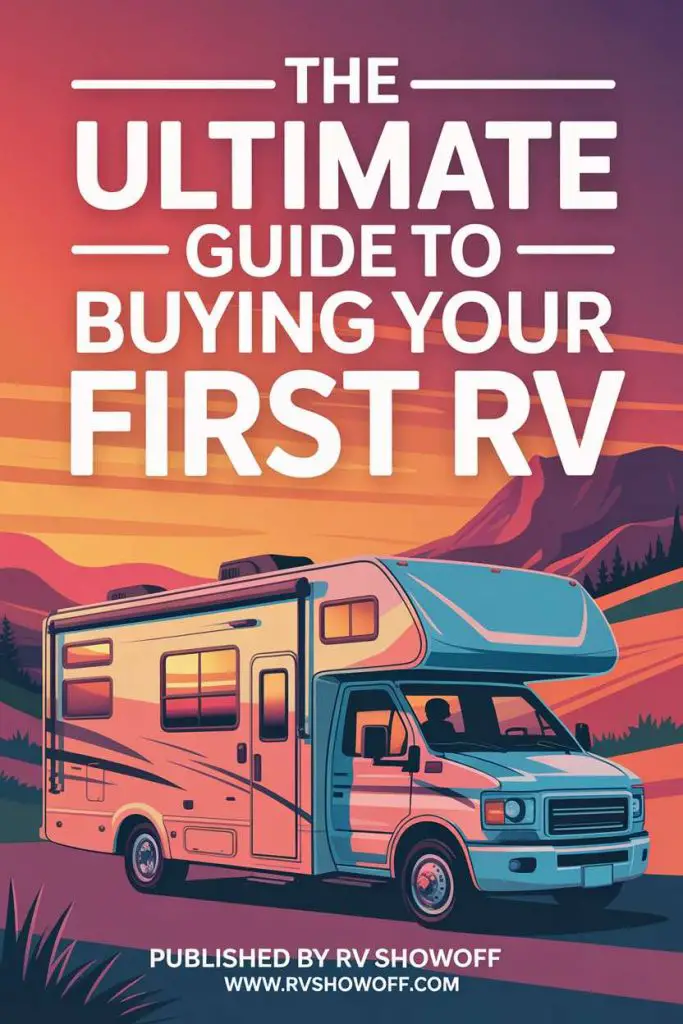Would you like to save this article?
Have you ever wondered what it’s really like to hit the road in an RV? You’re about to discover the unfiltered truth from someone who spent three weeks living the RV dream with a 7-month-old baby in tow. This isn’t your typical “RV life is perfect” story – we’re diving deep into both the magical moments and the reality checks that come with life on wheels.
From unexpected cost savings to dealing with waste tanks (yes, we’re going there), you’ll learn everything the glossy RV brochures don’t tell you. Whether you’re RV-curious or already planning your first adventure, these insights will help you hit the road prepared for the real RV experience.
1. Your Wallet Will Thank You (But Your Fuel Tank Won’t)
Let’s start with the money talk because everyone wants to know: Is RV travel really cheaper? The answer might surprise you. RV vacations save travelers 25-50% compared to hotel and flight travel, according to industry studies. For a 14-day trip, you’re looking at around $5,627 for RV travel versus $8,801 for hotels and flights – that’s a whopping $3,174 in savings!
Supporting Facts:
- Around 25 million RV camping trips occur in the US annually
- 11.2 million households own an RV as of 2021
- RV travel generates $140 billion in annual economic activity
The secret sauce? You’ll cook most of your meals instead of eating out, and you can find free camping spots through boondocking. However, here’s where reality bites – fuel costs can be brutal. These rolling homes are heavy and thirsty, so expect to budget significantly more for gas than a regular road trip.
Think of it this way: your RV is basically a house that drinks gas like a teenager drinks soda – constantly and expensively.
2. Boondocking Is Your Secret Weapon for Adventure
Here’s something most people don’t know exists: boondocking. It’s basically parking your RV in the middle of nowhere for free, and it’s absolutely game-changing for your travel budget and experience. You can find stunning spots on Bureau of Land Management (BLM) lands, national forests, and even some retail parking lots.
Boondocking Benefits:
- Free camping (saving $40-100+ per night on campgrounds)
- Incredible locations away from crowded campgrounds
- True wilderness experience with amazing views
- Flexibility to change plans on the fly
The Game-Changer: Services like Harvest Hosts let you park at wineries, farms, and breweries for free (with a yearly membership under $100). Imagine sipping wine while your home-on-wheels is parked right next to the vineyard!
It’s like having a VIP backstage pass to America’s most beautiful spots – except the backstage area is your living room.
3. Weather Becomes Your Best Friend (Finally!)
One of the biggest surprises? How much you’ll appreciate having a hard-sided shelter when Mother Nature gets moody. Unlike tent camping where you’re at the mercy of every raindrop and gust of wind, your RV becomes your fortress against the elements.
Weather Protection Features:
- Full heating and air conditioning systems
- Hard walls that don’t flap in the wind
- Dry storage for all your gear
- Wind break capabilities for outdoor activities
Real-World Stats:
- Public campgrounds cost $20-50 per night
- Private campgrounds run $40-60 per night
- Luxury RV resorts can cost $100+ per night
Strong coastal winds, unexpected rain, or temperature swings that would ruin a tent camping trip become minor inconveniences when you have climate control at your fingertips.
Your RV is like having a personal weather bubble – rain can’t dampen your spirits when you’re cozy inside watching Netflix.
4. You’ll Become Surprisingly Self-Sufficient
The feeling of being completely self-contained is incredible. Your RV becomes your own little ecosystem with everything you need to survive independently for days. Here’s what makes you truly self-sufficient:
The Four Pillars of RV Independence:
- Fresh water tank – For drinking, cooking, and showering
- Battery system – Powers lights, electronics, and appliances
- Propane tank – Runs heating, cooking, and sometimes refrigeration
- Waste storage – Keeps you legal and comfortable anywhere
Pro Tip: Drive for at least an hour daily to keep your battery fully charged. The RV’s alternator recharges the house batteries while you’re moving, so you’ll never run out of power if you’re mobile.
It’s like having a Swiss Army knife the size of a house – everything you need is built right in.
5. The Kitchen Will Become Your New Best Friend
Having a full kitchen changes everything about how you travel and eat. No more surviving on gas station snacks or blowing your budget on restaurant meals every night. You’ll have a full-sized fridge, freezer, three-burner stove, oven, and sink at your disposal.
Kitchen Game-Changers:
- 3-4 days of food storage capacity
- Three-burner stovetop for complex cooking
- Oven for baking and roasting
- Full sink with expandable counter space
- Microwave (when connected to power)
Real Experience: You’ll find yourself cooking more creatively than at home. Pasta dinners, French toast breakfasts, and even grilled meals using a portable propane fire pit become part of your adventure routine.
Your RV kitchen is like having a food truck, but instead of selling tacos, you’re serving happiness to your family.
6. Sleep Quality Will Actually Improve
Here’s something that shocked everyone: the sleep quality in an RV often beats tent camping and sometimes even rivals your home bed. You get a real mattress, proper pillows, and protection from outside noise and temperature fluctuations.
Sleep Quality Factors:
- Comfortable mattress (not sleeping on the ground)
- Temperature control with heating and A/C
- Sound barrier from hard walls
- Familiar bedding you can bring from home
- Separate bedroom space for privacy and quiet
The Reality: After three weeks of RV sleeping, you’ll wake up refreshed instead of sore and tired like after tent camping. This energy boost compounds over longer trips, making each day more enjoyable.
It’s like bringing your bedroom on vacation – except your bedroom has an ever-changing view out the window.
7. The Not-So-Glamorous Reality Check
Now for the truth no one wants to talk about: RV life has some seriously unglamorous moments. Let’s address the elephant in the room – literally dealing with your waste.
The Reality Check List:
- Dump stations – You’ll become intimately familiar with these
- Black tank (toilet waste) and gray tank (shower/sink water)
- Maneuvering challenges in cities and tight parking spots
- High fuel consumption due to size and weight
- Campground fees can be double tent camping costs
Parking and Driving Reality: Driving through Los Angeles in an RV? Prepare for white-knuckle moments. Even “small” RVs are challenging to park and navigate through urban areas. You’ll quickly learn to avoid busy city centers and plan routes carefully.
The 2-2-2 Rule: Most experienced RVers follow this guideline – travel no more than 200 miles per day, arrive by 2 PM, and stay at least 2 nights. This prevents driving fatigue and gives you time to actually enjoy destinations.
Think of these challenges as earning your RV merit badges – everyone goes through them, and they make for great stories later.
SOURCES
- Justin Outdoors YouTube Channel
- Everything I Learned RVing for the First Time – Original Video
- USA RV Camping Statistics 2024 – Camper Champ
- RV Industry Association (RVIA) – Vacation Cost Comparison Study
- Harvest Hosts Official Website
- Road Surfer RV Rentals
- Go RVing Industry Reports

